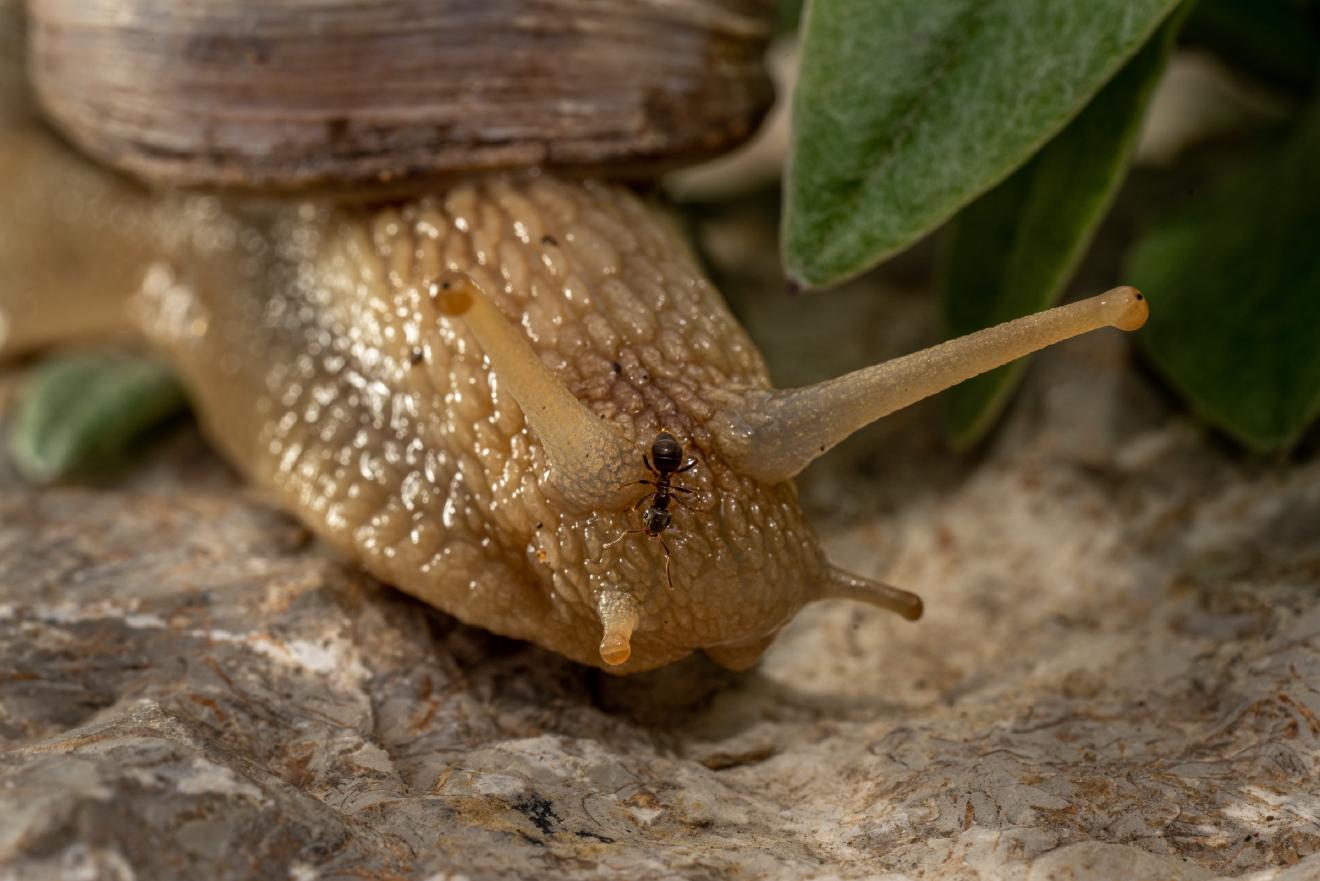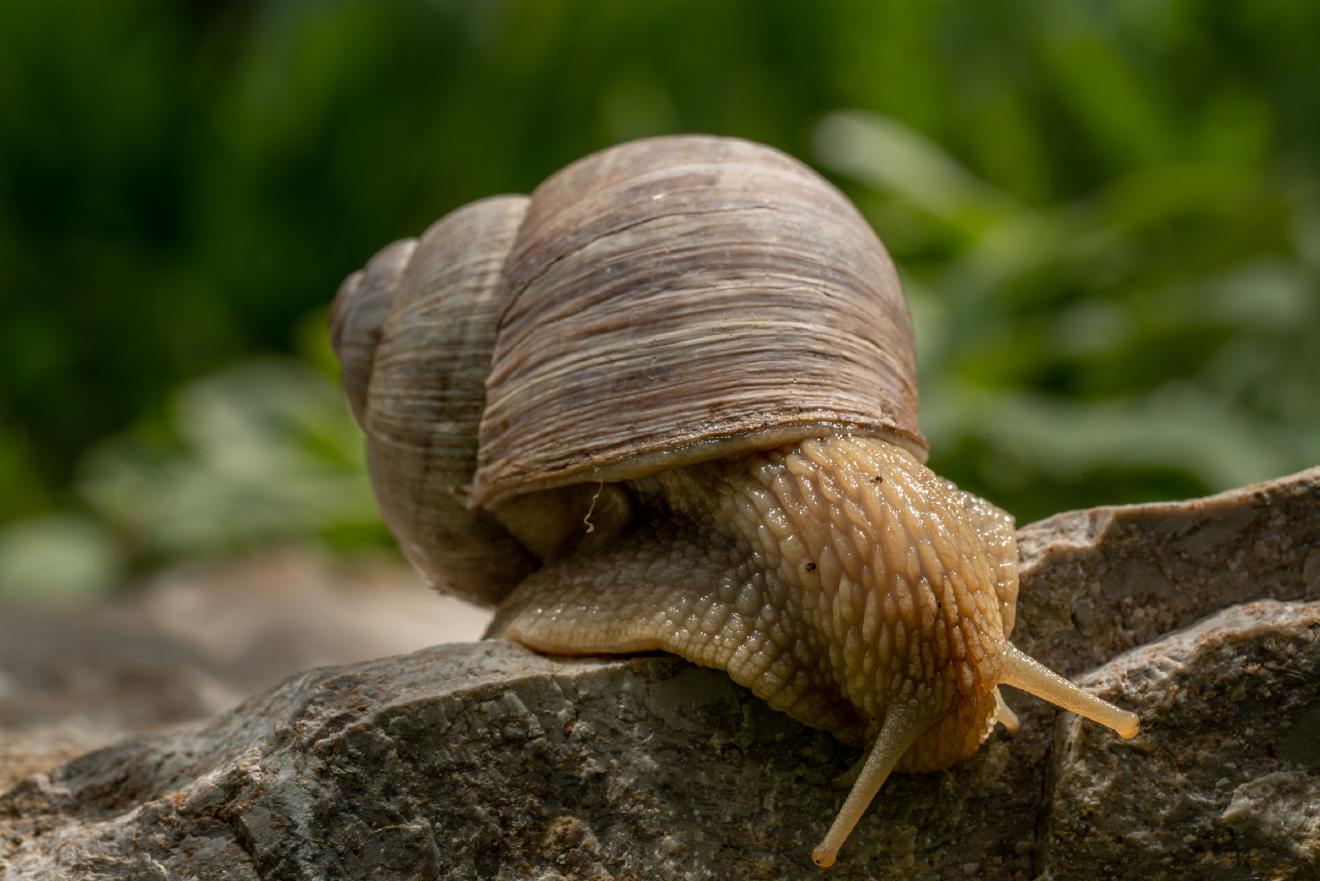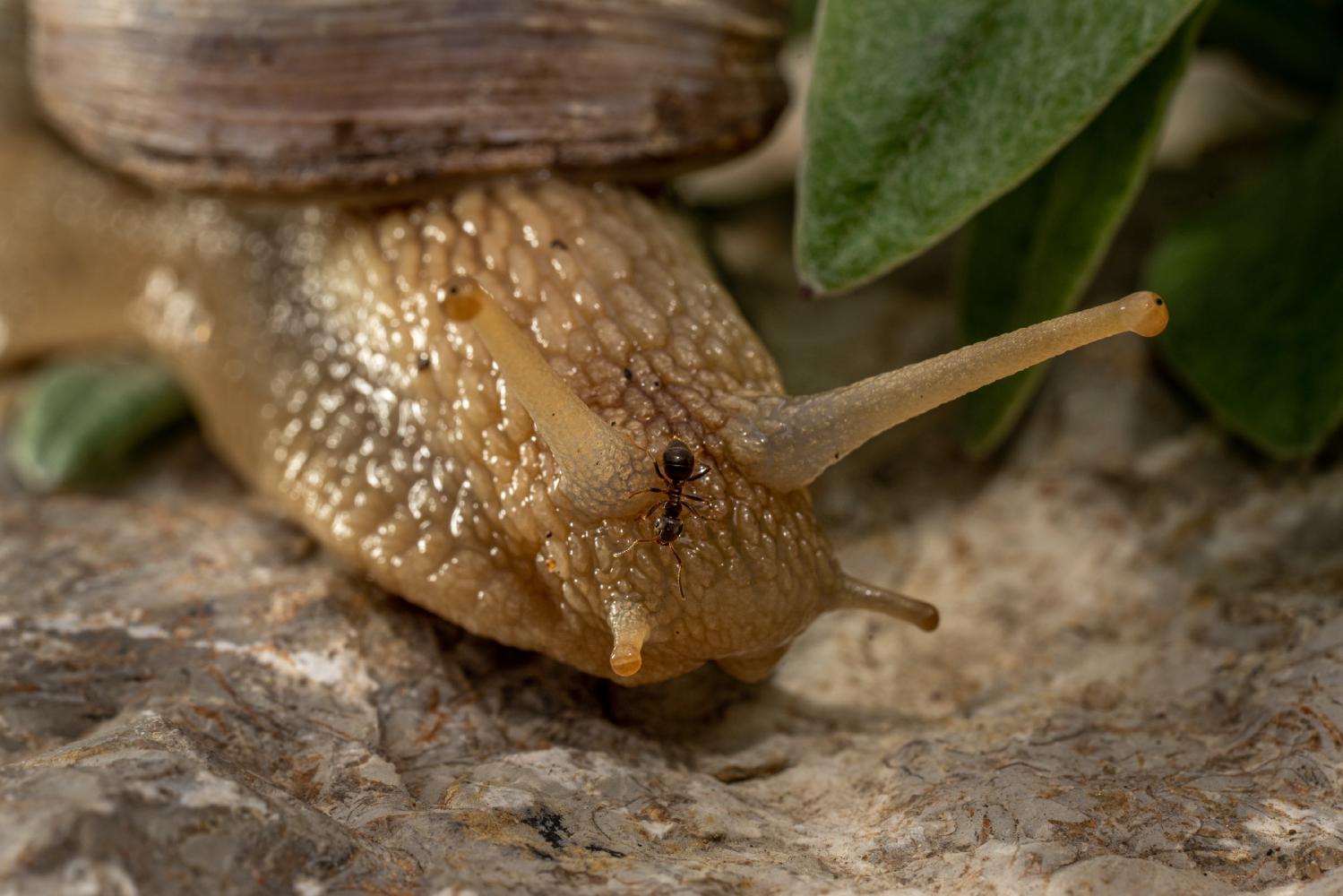Roman Snail
Lat. “Helix pomatia“
species
of family
“Helix Snails“
1 species
The distribution of Helix pomatia, commonly known as the Roman snail, has been greatly influenced by human dispersal. Its natural range includes parts of central Europe and the Balkans, but it has been introduced and established in many other regions, including western Belarus, the Baltic states, Scandinavia, and parts of the United States and Canada. This species is listed as “least concern” on the IUCN Red List but is protected by law in several countries due to habitat destruction and drainage. The snail is prized as a food source and has a long history of culinary use in French cuisine but is difficult to cultivate commercially.
Distribution
The present distribution of Helix pomatia is considerably affected by the dispersion of humans and synanthropic occurrences. The northern limits of their natural distribution run presumably through central Germany and southern Poland with the eastern range limits running through western-most Ukraine and Moldova/Romania to Bulgaria. In the south, the species reaches northern Bulgaria, central Serbia, Bosnia and Hezegovina and Croatia. It occurs in northern Italy southwards to the Po and the Ligurian Apennines. Westerly the native range extends to eastern France.Helix pomatia is now distributed up to western Belarus and the Baltic states, the south of Finland, Sweden and Norway, Denmark, northern Germany, and the Benelux. Scattered introduced populations occur westwards up to northern Spain. In Great Britain, it lives on chalk soils in the south and west of England. In the east, it was introduced up to the Volga. Introduced populations also exist in eastern USA and Canada.
Description
The shell is creamy white to light brownish, often with indistinct brown colour bands although sometimes the banding is well developed and conspicuous. The shell has five to six whorls. The aperture is large. The apertural margin is white and slightly reflected in adult snails. The umbilicus is narrow and partly covered by the reflected columellar margin.The width of the shell is 30–50 millimetres (1.2–2.0 inches). The height of the shell is 30–45 mm (1.2–1.8 in).
Conservation
This species is listed in IUCN Red List, and in European Red List of Non-marine Molluscs as of least concern. H. pomatia is threatened by continuous habitat destructions and drainage, usually less threatened by commercial collections. Many unsuccessful attempts have been made to establish the species in various parts of England, Scotland, and Ireland; it only survived in natural habitats in southern England, and is threatened by intensive farming and habitat destruction. It is of lower concern in Switzerland and Austria, but many regions restrict commercial collecting.Within its native range, Helix pomatia is mostly a common species. It is also considered Least Concern by the IUCN red list. However, it is listed in the Annex V of the EU’s Habitats Directive and protected by law in several countries to regulate harvesting from free living populations.
Germany: listed as a specially protected species in annex 1 of the Bundesartenschutzverordnung. Austria: the protection is up to Bundesländer, and the species is protected in some (e.g. Burgenland). Great Britain: protected in England under the Wildlife and Countryside Act 1981, making it illegal to kill, injure, collect or sell these snails. France: collecting prohibited of individuals with shell diameter under 3 cm and during the period from 1 April to 30 June. Denmark: commercial collecting is prohibited.
Cultivation
In Japan, the Mie Escargot Farm succeeded in the complete cultivation of the Burgundy species (Pomatia).
Uses
The intestinal juice of H. pomatia contains large amounts of aryl, steroid, and glucosinolate sulfatase activities. These sulfatases have a broad specificity, so they are commonly used as a hydrolyzing agent in analytical procedures such as chromatography where they are used to prepare samples for analysis.
Culinary use and history
Roman snails were eaten by both Ancient Greeks and Romans.Nowadays, these snails are especially popular in French cuisine. In the English language, it is called by the French name escargot when used in cooking (escargot simply means snail). Although this species is highly prized as a food, it is difficult to cultivate and is rarely farmed commercially.
Synonyms
Helicogena inflata Hartmann, 1844 (junior synonym) Helicogena pomatia (Linnaeus, 1758) (chresonym) Helicogena pomatia var. gesneri Hartmann, 1844 (junior synonym) Helicogena pomatia var. rustica Hartmann, 1844 (junior synonym) Helicogena pomatia var. sphaeralis Hartmann, 1844 (junior synonym) Helix (Helix) pomatia Linnaeus, 1758· accepted, alternate representation Helix eusarcosoma Servain, 1884 (junior synonym) Helix pomaria O. F. Müller, 1774 (junior synonym) Helix pomatia albida Moquin-Tandon, 1855 (junior synonym) Helix pomatia brunnea Moquin-Tandon, 1855 (junior synonym) Helix pomatia expansilabris Kobelt, 1906 (junior synonym) Helix pomatia parva Moquin-Tandon, 1855 (junior synonym) Helix pomatia quinquefasciata Moquin-Tandon, 1855 (junior synonym) Helix pomatia var. banatica Kimakowicz, 1890 (invalid; not Rossmässler, 1838) Helix pomatia var. claudiensis Kobelt, 1906 (junior synonym) Helix pomatia var. compacta Hazay, 1880 (junior synonym) Helix pomatia var. costellata Kobelt, 1906 (junior synonym) Helix pomatia var. dobrudschae Kobelt, 1906 (junior synonym) Helix pomatia var. elsae Kobelt, 1906 (junior synonym) Helix pomatia var. gratiosa Gredler, 1892 (junior synonym) Helix pomatia var. hajnaldiana Hazay, 1880 (junior synonym) Helix pomatia var. kapellae Kobelt, 1906 (junior synonym) Helix pomatia var. lagarinae Adami, 1885 (junior synonym) Helix pomatia var. lednicensis Brancsik, 1888 (junior synonym) Helix pomatia var. luteola Kobelt, 1906 (junior synonym) Helix pomatia var. pannonica Kobelt, 1906 (junior synonym) Helix pomatia var. pedemontana Kobelt, 1907 (junior synonym) Helix pomatia var. piceata Gredler, 1890 (junior synonym) Helix pomatia var. pulskyana Hazay, 1880 (junior synonym) Helix pomatia var. radiata Ulicny, 1885 (junior synonym) Helix pomatia var. sabulosa Hazay, 1880 (junior synonym) Helix pomatia var. serbica Kobelt, 1906 (junior synonym) Helix pomatia var. solitaria Hazay, 1880 (junior synonym) Helix pomatia var. transsylvanica Kobelt, 1906 (junior synonym) Helix promaeca Bourguignat, 1882 (junior synonym) Helix pyrgia Bourguignat, 1882 (junior synonym) Helix scalaris O. F. Müller, 1774 (junior synonym) Helix segalaunica Sayn, 1888 (junior synonym)
References
This article incorporates public domain text from the reference.
Further reading
Blume, W. (1920). Einige mazedonische Schnecken. Archiv für Molluskenkunde, 52 (2): 89–92. Frankfurt am Main. Egorov R. (2015). “Helix pomatia Linnaeus, 1758: the history of its introduction and recent distribution in European Russia”. Malacologica Bohemoslovaca 14: 91–101. PDF (in Russian) Roumyantseva E. G. & Dedkov V. P. (2006). “Reproductive properties of the Roman snail Helix pomatia L. in the Kaliningrad Region, Russia”. Ruthenica 15: 131–138. abstract Bank, R. A.; Neubert, E. (2017). Checklist of the land and freshwater Gastropoda of Europe. Last update: July 16, 2017.
External links
Linnaeus, C. (1758). Systema Naturae per regna tria naturae, secundum classes, ordines, genera, species, cum characteribus, differentiis, synonymis, locis. Editio decima, reformata [10th revised edition], vol. 1: 824 pp. Laurentius Salvius: Holmiae Korábek, O., Juřičková, L. & Petrusek, A. (2015). Splitting the Roman snail Helix pomatia Linnaeus, 1758 (Stylommatophora: Helicidae) into two: redescription of the forgotten Helix thessalica Boettger, 1886. Journal of Molluscan Studies 82: 11–22 Animal Diversity Web page


Ancestry Graph
Further Information
Copyright

This article uses material from the Wikipedia article Helix pomatia the free encyclopedia Wikipedia which is released under Creative Commons Attribution-ShareAlike 4.0 International License). On Wikipedia a list of authors is available.
